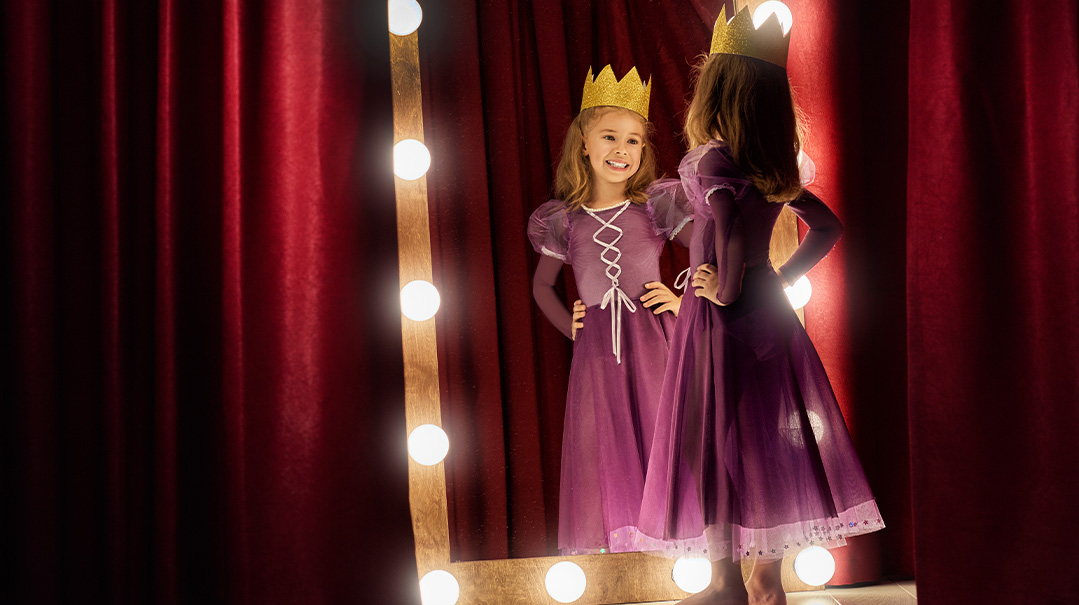Marks on Her Skin

She obviously had a story, and I was curious

D uring the height of Covid, my son and I spent an hour and a half outside a local health clinic, waiting our turn on the sidewalk. He needed to get tested to go back to yeshivah after break, and only two families were allowed in the clinic at a time. When it was finally our turn, the other pair allowed in with us was also a frum mother and her son, a three-year-old boy.
The woman held her son’s hand and followed him around the large waiting room as he jumped off the yellow-and-blue seat cushions onto the floor. On one jump, I noticed her outstretched arm. A collection of purple, red, and yellow flowers covered her fair skin. There was a smaller design wrapped around her other wrist.
I wondered why this lady, with a skirt to the floor and a snood on her head, had tattoos. She obviously had a story, and I was curious.
Minutes later, she sat at a safe distance, and we made small talk about Covid. Her son’s school had shut down various grades, and it was challenging for her and her husband, who both worked full-time. She was here to get tested for Covid since her parents planned to come for dinner the following night, but she’d woken that morning with a fever.
After a few more minutes of schmoozing, she was ushered into the doctor’s office with her son. She took his hand as he skipped through the waiting room. We wished each other well, and they were gone.
I thought back to one Friday night about a year prior, when my son and I were alone in the dining room after the Shabbos seudah. He commented that his rebbi had taught him in halachah shiur that it’s forbidden to permanently dye one’s skin.
I’d nodded. “Right.”
His face grew serious. “So maybe you should tell her?”
Her was my daughter. Not long before, she’d acquired a small rose tattoo on the inside of her ankle. At first, I’d imagined it was dirt or a scab. Or one of those play tattoos from the 99-cent store. But when she was wearing her flip-flops a week later, I saw the rose again.
Then another one appeared, a delicate red bird, on the inside of her wrist. A few months later, there was one right over her heart.
I opened my mouth to respond to my son, but nothing came out.
He waited. He was, and still is, the only one of my children to mention my daughter’s tattoos.
I looked into his sweet face and responded with my best guess. “She knows,” I said softly. “She did that because she is in pain. A lot of pain.”
At my words and my tear-filled eyes, my teenage boy did what most teenage boys would have done. He shrugged and walked away.
I was left alone with my thoughts, the same ones that had haunted me since I’d seen her first tattoo. Though my daughter had been struggling for several years, I didn’t understand why she’d done this. It was so drastic. Did she really want these tattoos on her skin permanently? They symbolized a rejection of everything our family believed. One of the reasons tattoos are forbidden is because we believe the body is G-dly, given to us as a gift on loan, and we are meant to return that gift as we received it. However, we don’t define ourselves as bodies, but souls, on complicated and astounding journeys, using our bodies to come closer to Hashem.
Hashem could have put us — this specific son and me — in that waiting room with anyone else. But he chose this woman with her tattoos.
My son was quiet the whole time we were at the clinic. Did he notice her tattoos?
I wanted the woman to come back out of the doctor’s examination room so I could ask for her number. If I invited her for a cup of coffee, she could explain the tattoos to me. I wanted to know why she had them done. I wanted to understand what they meant to her. I wanted to ask her all the questions I couldn’t ask my daughter.
Maybe that’s what I wanted, but what I needed that day was what I got: to see a sincere, dedicated mother, who worked in a helping profession and took her job seriously, who had tattoos. The tattoos were remnants of a specific time in her life, and that time was over. The marks on her skin didn’t affect any of the qualities I saw in her. The fact that she was living the life she was, with her tattoos that symbolized a “past life,” made her that much more impressive.
Since that day over two years ago, I’ve asked my daughter some of those difficult questions. It was true: She got the tattoos when she was in tremendous pain. It’s also true she acted impulsively, and that there was no ill intent in her actions. And, yes, she regrets getting them.
And now, more than three years since I spied the first tattoo, I don’t cringe when I see them. I view the marks on her skin as signs of her soul’s difficult but worthwhile journey, a journey my daughter is taking with utter bravery.
(Originally featured in Family First, Issue 847)
Oops! We could not locate your form.







